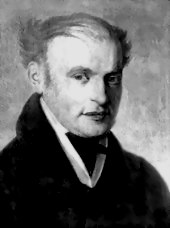Life and work
From 1778 to 1788 he was educated at the Hohe Karlsschule in Stuttgart where he trained as a painter. He then attended the Académie des Beaux-Arts (1789–1790) in Paris and studied architecture in Rome (1791–1797). After returning to Stuttgart, he worked for the court in Württemberg as a designer-draughtsman and decorative painter. An early architectural project was the Gothic Revival church of Hohenheim (1797; re-erected 1803 at Monrepos, Ludwigsburg; ruin since the 1940s. With the assistance of Goethe, whom he met in Stuttgart in 1797, Thouret was commissioned to design the décor of the Schloss in Weimar and to renovate the court theatre there (1798–1800). On his return to Stuttgart, Thouret was appointed court architect to Frederick II, Duke of Württemberg (1754–1816), in 1799. He undertook numerous building projects, nearly all in the Neo-classical style, in Stuttgart and Ludwigsburg where the dukes had their official residences; these schemes took account of the increasing need for prestigious buildings in Württemberg, following its elevation in 1806 to the Status of a kingdom, with the Duke becoming its first king. As well as renovations to the royal palaces, designs for park furniture and ephemeral festival constructions, several theatre projects were entrusted to Thouret, and he also produced furniture designs for the interior decoration of the palaces. In addition to his work for the Court, Thouret designed many private buildings, especially in Stuttgart (e.g., Wohnhaus Erbe, Königstrasse, 1806; Wohnhaus Kohl, Friedrichstrasse, 1817). After the death of the King in 1816, Thouret was dismissed in 1817 from his post as court architect. He was appointed Professor of architecture, but because of delays in the proposed establishment of a professional academy his potential as a teacher of architecture was never developed. Instead, he continued to be given design commissions and was involved in almost all the foremost architectural projects undertaken in Stuttgart to the 1830s (e.g., Katharinenhospital, 1827; Hoftheater, 1833). Among the few Works by Thouret that have been preserved are his schemes for the interior decoration of Weimar Palace (begun 1789) and Ludwigsburg Palace (begun 1805), the theatre (1812) at Ludwigsburg Palace, the assembly hall and pump room (begun 1825) in Bad Cannstatt and the Eberhard baths (begun 1838) in Wildbad.

Frederick I was the ruler of Württemberg from 1797 to his death. He was the last Duke of Württemberg from 1797 to 1803, then the first and only Elector of Württemberg from 1803 to 1806, before raising Württemberg to a kingdom in 1806 with the approval of Napoleon I. He was known for his size, at 2.12 m and about 200 kg (440 lb).
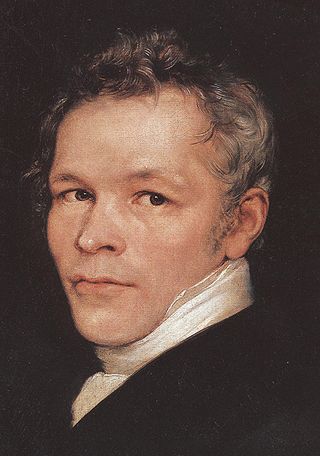
Karl Friedrich Schinkel was a Prussian architect, city planner and painter who also designed furniture and stage sets. Schinkel was one of the most prominent architects of Germany and designed both Neoclassical and neo-Gothic buildings. His most famous buildings are found in and around Berlin.

Charlotte, Princess Royal, was Queen of Württemberg as the wife of King Frederick I. She was the eldest daughter and fourth child of George III of the United Kingdom and his wife, Charlotte of Mecklenburg-Strelitz.
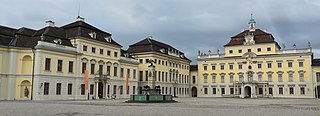
Ludwigsburg is a city in Baden-Württemberg, Germany, about 12 kilometres (7.5 mi) north of Stuttgart city centre, near the river Neckar. It is the largest and primary city of the Ludwigsburg district with about 94,000 inhabitants. It is situated within the Stuttgart Region, and the district is part of the administrative region (Regierungsbezirk) of Stuttgart.

Ludwigsburg Palace, nicknamed the "Versailles of Swabia", is a 452-room palace complex of 18 buildings located in Ludwigsburg, Baden-Württemberg, Germany. Its total area, including the gardens, is 32 ha – the largest palatial estate in the country. The palace has four wings: the northern wing, the Alter Hauptbau, is the oldest and was used as a residence of the Duke of Württemberg; the east and west wings were used for court purposes and housing guests and courtiers; the southern wing, the Neuer Hauptbau, was built to house more court functions and was later used as a residence.

William I was King of Württemberg from 30 October 1816 until his death.

Charles Eugene was the Duke of Württemberg, and the eldest son, and successor, of Charles Alexander; his mother was Princess Marie Auguste of Thurn and Taxis.

Solitude Palace is a Rococo schloss and hunting retreat commissioned by Charles Eugene, Duke of Württemberg. It was designed by Johann Friedrich Weyhing and Philippe de La Guêpière, and constructed from 1764 to 1769. It is located on an elongated ridge between the towns of Leonberg, Gerlingen and Stuttgart in Baden-Württemberg.

The New Palace is an 18th-century Baroque palace in Stuttgart and is one of the last large city palaces built in Southern Germany. The palace is located on the Schlossplatz in front of the Jubiläumssäule column and Königsbau. Public tours of the building are only permitted by special arrangement, as the building contains some government offices. Once a historic residence of the kings of Württemberg, the New Palace derives its name from its commissioning by Duke Carl Eugen of Württemberg to replace the Old Castle in the early years of his reign. Originally, Charles commissioned Nikolaus Friedrich Thouret, but architects Leopoldo Retti, Philippe de La Guêpière, Reinhard Heinrich Ferdinand Fischer would contribute to the design, history, and construction of the palace.

(Pierre Louis) Philippe de La Guêpière was an 18th-century French architect whose main commissions were from Karl Eugen, Duke of Württemberg.

The House of Württemberg is an ancient German dynasty and former royal family of the Kingdom of Württemberg.

Schloss Favorite is a Baroque maison de plaisance and hunting lodge in Ludwigsburg, Germany, which was used as a summer residence and hunting lodge. It is located on a rise, directly north of Ludwigsburg Palace to which it is connected via an avenue.
Antonio Isopi was a Roman sculptor of Classicism mainly working at the court of the Dukes of Württemberg. Antonio Aloysius Petrus Isopi first lived and worked in his home city as a sculptor and soon specialized on restoring antique pieces of art. The iron cast Württemberg heraldic animals lion and hart – still to be seen in front of Stuttgart's New Castle – are one of his major works.

Nicolas Guibal was an artist, art educator and art gallery director from the Duchy of Lorraine. He worked for most of his career as a court painter for Charles Eugene, Duke of Württemberg. His main works consist of ceiling paintings in the Solitude Palace, Monrepos, and the Hohe Karlsschule.
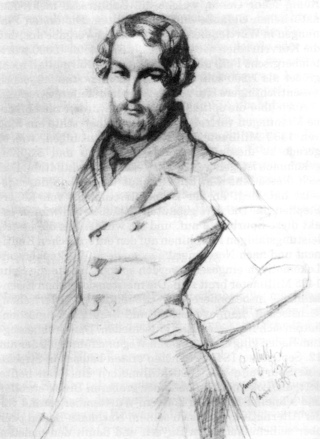
Karl von Etzel was a German railway engineer and architect. He created many famous railway lines, bridges and viaducts, including the Bietigheim Enz Valley Viaduct.

Schloss Weimar is a Schloss (palace) in Weimar, Thuringia, Germany. It is now called Stadtschloss to distinguish it from other palaces in and around Weimar. It was the residence of the dukes of Saxe-Weimar and Eisenach, and has also been called Residenzschloss. Names in English include Palace at Weimar, Grand Ducal Palace, City Palace and City Castle. The building is located at the north end of the town's park along the Ilm river, Park an der Ilm. It forms part of the World Heritage Site "Classical Weimar", along with other sites associated with Weimar's importance as a cultural hub during the late 18th and 19th centuries.

Leopoldo Mattia Retti, also known as Leopold Retty was an Italian architect working in Southern Germany. He is considered one of the leading representatives of late French Baroque. In Ansbach and in Mögeldorf there is a street named after Retti.
Johann Friedrich Nette was a German architect of the Baroque epoch, trained in the Bohemian style. From 1707 until his death, Nette was the court architect for the Duchy of Württemberg.
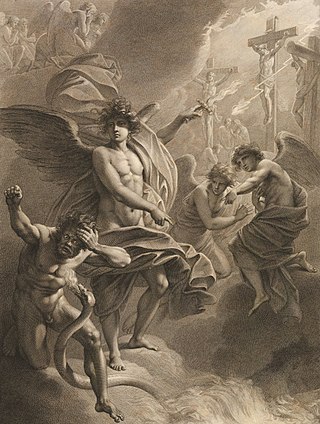
Johann Friedrich Leybold was a German miniaturist painter and copper engraver.

Paul Friedrich Theodor Eugen, Reichsfreiherr von Maucler was a Württemberg politician and bibliophile.
